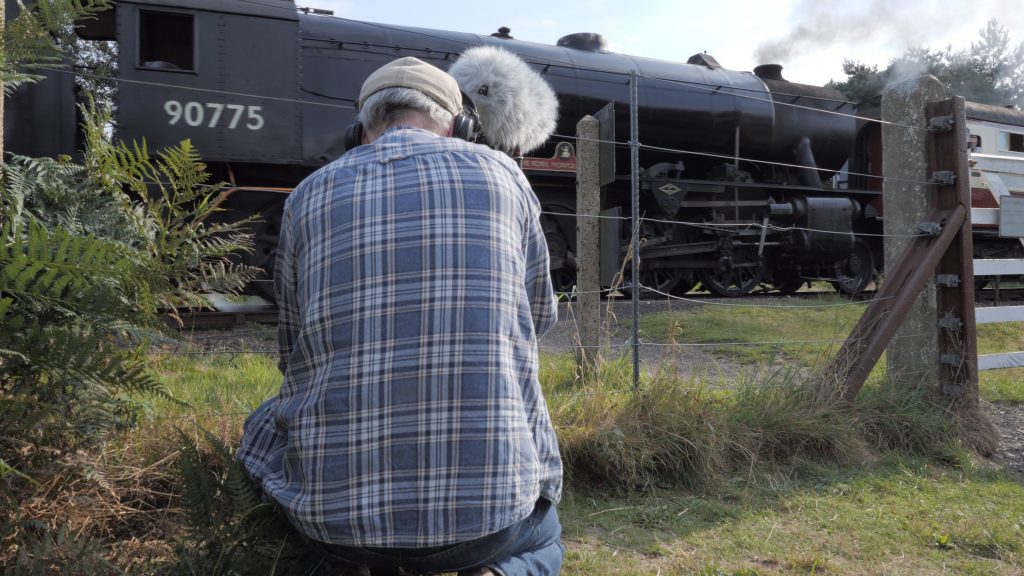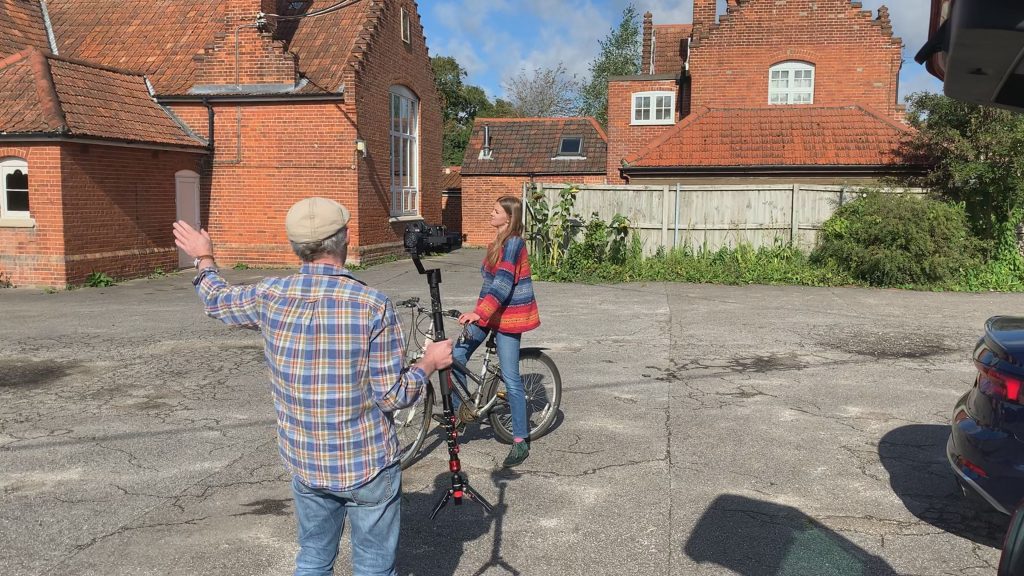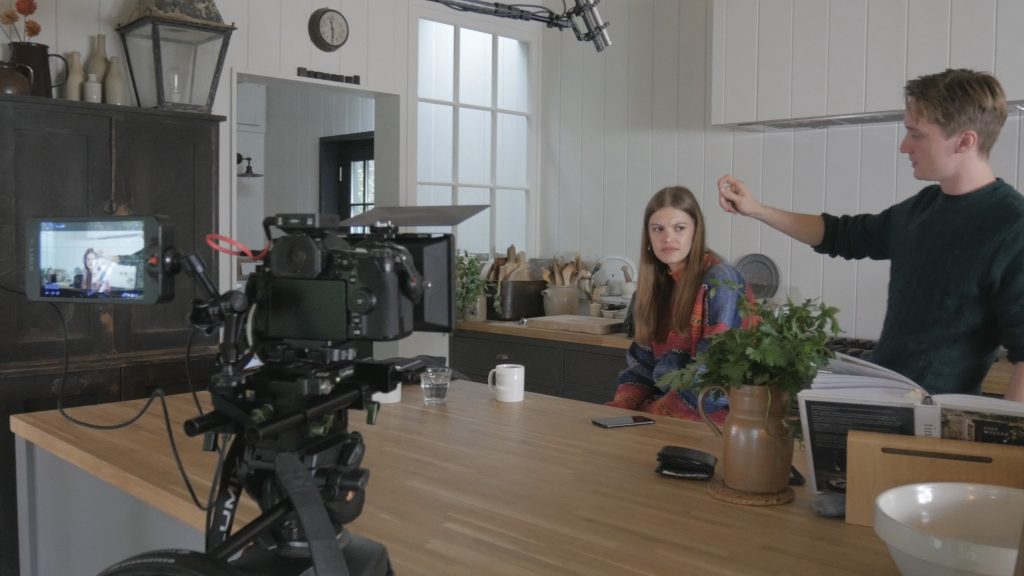
After shooting the opening, interior, scene for my short three-minute film (an entry into this year’s My Røde Reel competition) – for which see part 1 of this blog post – work on the film moved on to recording sounds (much of the film requires sounds from the 1940s set to film footage of the modern world) and, then, filming outside.
Recording sounds from the 1940s seemed simple enough, and some sounds were relatively easily available. The nearby North Norfolk Railway provided the perfect opportunity to capture a steam locomotive passing by, so I went to the crossing at Kelling Heath to get away from less authentic sounds of modern travellers on the railway. It then just became a case of waiting for the right sounding train to come by, smiling weakly at the passing dog-walkers who – quite reasonably – assumed I was some railway sound-recording enthusiast. To keep things simple and light I used a MS pair in a Rode blimp on a Gitzo boompole.
Some sound effects were relatively straightforward and could be done at home: the click of an old radio being turned on (mono), a door knock (mono), footsteps on a wooden floor (NOS pair) and re-recording sounds (my earlier acoustic recording of Lucy Grubb and a BBC wartime broadcast) via a bluetooth speaker to get a more radio-like sound (mono again). Some sounds seemed as if they would be easy, but were harder to track down: it took a bit of time before I could find a grandfather clock to record ticking away. Recording the sound of a 1940s school playground had its own set of challenges: I could hardly roll up at a school – or walk past repeatedly – with a boompole and blimp without risking arrest. Fortunately, a friend is a teacher and he arranged for me to visit one lunchtime: the kids were fantastic, even obliging with old-fashioned play including hopscotch, skipping and singing Ring-A-Ring-A-Roses. And one of the smallest reception class ones took great delight in extracting small items from my sound bag so he could inspect them. Quite took me back to when our children were that age. Recording the sound of cycling was achieved by clipping two Rode Wireless GO ii TX units to either side of a rucksack, and syncing the two internal recordings with a handclap. The only original sound effect that thwarted me was the sound of a WW2 bomber taking off. The one flying Lancaster in the UK was under repair at Duxford for a year until a couple of weeks ago and then – despite scouring Facebook sites of specialist plane spotters(!) – I couldn’t find any details of its few test flights back at RAF Coningsby before the end of the season for the Battle of Britain Memorial Flight: I didn’t fancy a few four-hour return trips to Lincolnshire on the complete off-chance. So, in the end, I turned to Freesound and used someone else’s excellent recording of two B-25 Mitchell bombers taking off (duly attributed in the film): B-25s were used by the RAF at Foulsham (the former airfield I have used in the film) during the war, so the sound was as authentic as a Lancaster. A bit of editing was required to lose modern voices.
Another exercise between the two main filming shoots was to sort out an authentic-looking headstone for a WW2 pilot. Making a prop with my skill levels seemed unlikely to pass muster, so I photographed some existing war grave headstones in North Norfolk churchyards and, as the Portland stone was quite varied from one to the next, used one of these as the basis to create a headstone to our fictional pilot in Photoshop (i.e. creating a new name, service number, age, date of death etc.): using a couple of locked-off shots for the relevant part of the film would then allow me to mask these into the shot (carefully using the same focal length lens and angle/distance ).
Then it came to the second day of filming: this time outdoors. While there was no dialogue, there were still significant challenges. Above all was the weather: availability of my actors meant the weather had changed to become very autumnal and we ended up with a day with 20 mph wind as well as sunshine (worse still, the latter coming and going as clouds scudded across the sky). Keeping an acceptable exposure and flying a small drone (my DJI Mavic Mini) weren’t as easy as hoped…

And then, finally, to editing in Vegas. I’d already edited most of the first scene, so it was a case of adding the rest of the film, fine-tuning the first scene (mainly adding the sound effects), masking in the faux headstone and, then, assembling a behind-the-scenes film. The latter was a requirement of the My Røde Reel competition and needed to show use of a Røde product (no trouble as I used many Røde mics throughout the filming). I opted for repeating the main film, but in black and white, with picture-in-picture and text overlays to show the behind-the-scenes activities from a technical perspective.
Here’s the final film:
And here’s the behind-the-scenes film:

